Canada Remembers Times - 2010 Edition - Page 2
Peacekeeping In A Place With No Peace To Keep
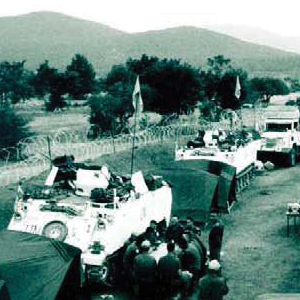
Princess Patricia’s Canadian Light Infantry Battle Group - CANBAT 1 - Croatia 1993
Photo: DND
In the years following the Korean War, Canada developed a well-deserved reputation for taking part in United Nations (UN) peacekeeping efforts around the world. Peacekeeping involves sending impartial troops into a war-torn area after a cease-fire has been negotiated to prevent new fighting breaking out.
In the early 1990s, the Eastern European country of Yugoslavia was torn apart by ethnic and religious differences and civil war erupted. Atrocities were committed against civilians on all sides. The UN sent in forces to try to contain the worst of the violence, but fighting was still going on. In September 1993, the Princess Patricia’s Canadian Light Infantry serving in the UN forces found themselves in the middle of the heaviest firefight a Canadian unit had then experienced since the Korean War.
The “Medak Pocket” was a portion of Croatia that was then under Serbian control. The Croats had launched an offensive to take the area and heavy fighting broke out. A cease-fire was arranged, with UN forces overseeing the withdrawal of both sides. Canadian and French soldiers began to move in but Croatian forces began firing on the Canadians. The Patricias bravely repelled many attacks and held their position despite being pounded with heavy machine gun fire, grenades, cannons and small arms fire. The next morning, despite another cease-fire, the Croats still prevented UN troops from entering the pocket.
The Canadian commander held an impromptu press conference in front of their roadblock to show the world what they were doing, forcing the Croats to open the road. Tragically, the UN forces found the ethnically Serbian villages in the Medak Pocket destroyed and many civilians killed—the victims of “ethnic cleansing.”
The War Comes to Our Doorstep
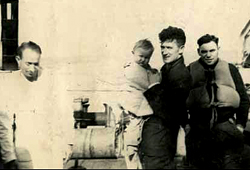
Survivors of the SS Caribou. October 14, 1942. Photo: Cassie Brown Collection, Coll 115. Archives and Special Collections, Queen Elizabeth II Library, Memorial University.
In the early morning hours of October 14, 1942, the ferry SS Caribou was on its way from Cape Breton to Newfoundland with 237 people on board, many of them civilians. The dark night was lit up when the ferry was hit by a torpedo from a German U-boat. The explosion threw people from their bunks and they rushed to get off the sinking ship. Several lifeboats were damaged or could not be launched, so many were forced to jump into the cold water.
Among the casualties was Royal Canadian Navy Nursing Sister Agnes Wilkie, Canada’s sole military nurse to be killed due to enemy action during the war. Her colleague Margaret Brooke was named a Member of the Order of the British Empire for her brave efforts to save her good friend.
One hundred thirty-six people died that night, including at least five mothers and 11 children—a tragedy that still echoes today for many Atlantic Canadians.
Women on the Job!

Mrs. A. Mackay operating a rivet gun at Pictou Shipyards.
Photo: LAC PA-112891
With so many young men in uniform, women were called upon to take up jobs that had been traditionally done by men. This included important manufacturing jobs to produce the materials so desperately needed for the war effort. One example was the Pictou Shipyards in northern Nova Scotia. Approximately 700 women picked up hammers, wrenches and rivets to help build dozens of merchant ships to carry supplies overseas.
At War in Korea
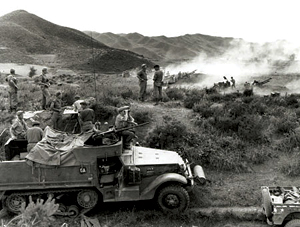
Canadian artillery in action in Korea, June 1951.
Photo: LAC PA-128820
Korea has traditionally been known as the “Land of the Morning Calm,” but for the more than 26,000 brave Canadians who travelled halfway around the world to fight with the United Nations (UN) forces in the Korean War, calmness was in short supply.
Alberta’s Ray Nickerson enlisted in the Canadian Army at age 16 and served in Korea. He remembers his first encounter with the enemy:
“... We took an attack at night ... one wave and another wave behind and another wave behind, like, it seemed like they had endless, endless, endless men. ... And it was pretty damn scary when the flares were going up and you could see all these, it looked like a bunch of ants crawling around, coming up the hills ... it was scary, but you knew you had a job to do and you had to do it, you know.”
The war began on June 25, 1950 when North Korea invaded South Korea. When an armistice was finally signed on July 27, 1953, after more than three years of fighting, the border was back close to where it had been before the war. Canada had helped restore peace and freedom to the people of South Korea—a peace paid for in part by the 516 Canadian servicemen who died during the war. No formal peace treaty was ever signed, however, and tensions along the border between the two countries remain high today.
Operation Medusa
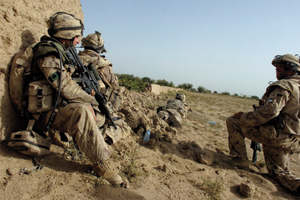
Canadians readying to storm a compound where Taliban soldiers are hiding during Operation Medusa.
Photo: DND AR2006-G007-0071
The challenges faced by Canadians serving in Afghanistan with the UN-sanctioned International Security and Assistance Force (ISAF) have been great and the risks many. While much of the toll taken on Canadian Forces members has come from roadside bombs and suicide attacks, Canadians have also taken part in major combat with the Taliban.
Operation Medusa was a Canadian-led offensive in the Kandahar area of the country in September 2006. Afghan, American, Dutch and Danish forces were also involved. The goal was to clear the Taliban from the Panjwai district to help the Afghan government establish control over the area. The many hostile villages, terrain criss-crossed by irrigation ditches, trenches and tunnels, extreme climate and roadside bombs made it a difficult place for the Canadians to operate.
Approximately 1,400 ISAF soldiers, including more than 1,000 Canadians, took part, making it Canada’s largest combat operation in more than 50 years. It was hard fighting and the Canadians took heavy fire, but the Taliban were pushed from the district. The cost was high, however —12 Canadian Forces members were killed in the two-week offensive.
Canadian in the South African War
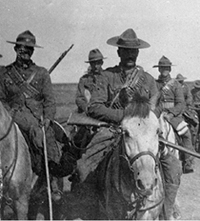
2nd Canadian Mounted Rifles on patrol in South Africa in 1902.
Photo: LAC PA-173029
The South African War was the first overseas conflict in which large contingents of Canadians served. It was a struggle between the British, who wanted to unite South Africa under their rule, and the Dutch settlers, who wanted to remain independent.
When war broke out in 1899, after decades of tensions, Britain requested military assistance from Canada and other members of the Commonwealth. Canadian opinion was split over what some saw as a “British War” in which our country should not become involved, while others were drawn to the idea of defending the British Empire. Despite the controversy, a thousand men were quickly recruited to form the First Contingent that sailed from Québec City on October 30, 1899.
The war ended in 1902 with the Dutch settlers surrendering their independence in exchange for support to the victims of the war and eventual self-government. More than 7,000 Canadians had volunteered for service with 277 dying (most from injury or disease caused by the harsh conditions), and more than 250 being wounded.
- Date modified: